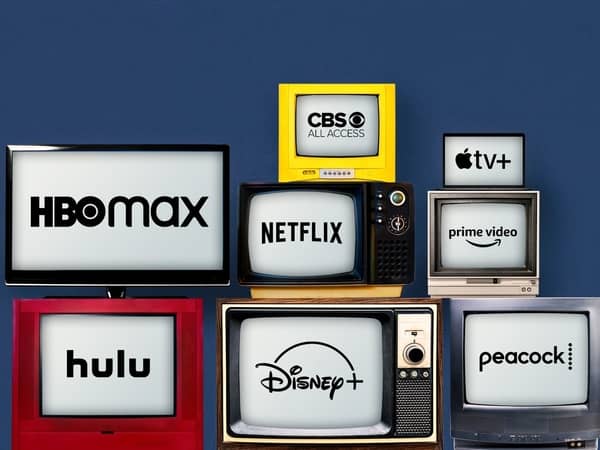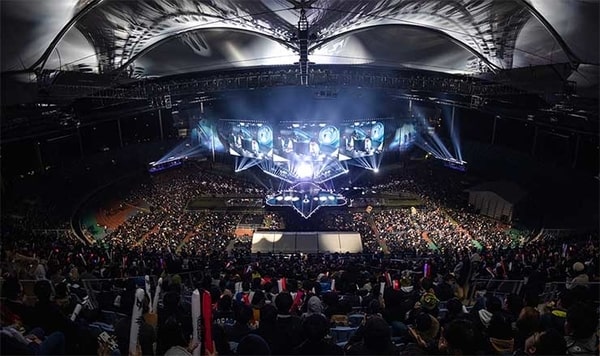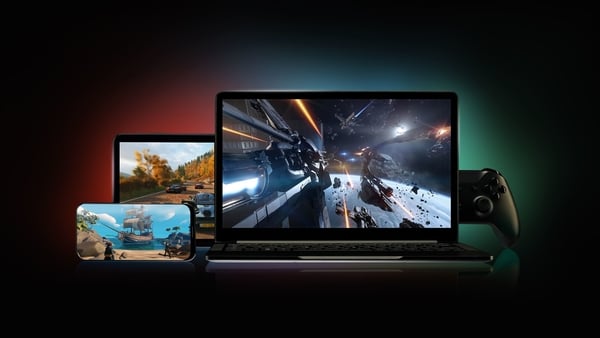
IoT and Edge Computing Will Have a Major Impact on Future Technology
March 18, 2021
Data Center Colocation Trends for 2021
March 30, 2021Video games and video game technology have come a long way even in the past 10 years. Every time a new video game console is slated to release gamers specifically and technology enthusiasts generally speaking anticipate seeing the latest specifications. The world wants to see how much the graphics have improved and how the gameplay has developed.
Microsoft shocked the gaming world when they didn’t discuss the new hardware, but instead focused on online gaming and its gaming store. They also stated that the new projects for Xbox Series X will not be defined or constrained by hardware specifications as they have in the past. They mentioned that hardware has its limitations. Gaming companies used to build video games to fit the gaming console’s hardware, but the future looks to be more open-ended than it has been in the past.
The specifications to Microsoft’s new gaming console are available (which seem to be a sizeable upgrade from the previous model), but the focus on cloud gaming seems to be where the company is headed. The company has even announced a game streaming service catering to gamers who play on their phones named Project xCloud.

What Is Cloud Gaming?
The ever-changing landscape of entertainment has made its way to gaming. Streaming services like Netflix and Hulu have become where many consume content. The gaming industry has followed suit with cloud gaming. This method of gaming allows users to pull up games of their choosing from remote servers. The benefit of cloud gaming is the ability to use some of the best hardware available. In this format, games are streamed instead of downloaded onto your server. This requires a subscription just like Netflix and Hulu.
Even before the rise of cloud gaming, data centers have played a role within the gaming industry. Playing online multiplayer online games requires the use of data. The most popular games such as Fortnite and World of Warcraft all require data centers to stay online. The entire gaming network depends on the performance of these data centers. If the servers fail, all of the games online will be at a standstill.
Why are the largest gaming companies shifting towards cloud gaming? And why are gamers jumping on board with this new style of gaming? It’s because cloud gaming makes owning physical hardware unnecessary. Games can be played using the best servers without the need to own them yourself. Serious gamers would usually need to buy the latest console or build the best PC, but the rise of cloud gaming has changed all of this.

Why Data Centers Are Important for All Streaming Services
Whether users are aware of it or not, data centers are a crucial part of how we consume content, and as the world creates more of this content, data centers will be in greater need.
As the world streams more shows, movies, and games, data centers will need to continue to improve. All of these streaming services need to deliver content as fast as possible and without latency. One way this problem is being solved is with the use of edge computing.
The closer in proximity the user is to the server, the faster the connection is. They will also experience less latency. Edge computing builds edge infrastructures in between the larger data centers and potential users. Positioning itself in between allows for stronger connectivity. It brings the users closer to the servers.

Edge Computing and the Internet of Things
Gamers aren’t the only ones taking advantage of edge computing. We live in a connected world. Our connected devices range from smart televisions, smart voice-activated assistants, robot vacuums, and more. All of these devices are a part of the Internet of Things network, and all rely on the power of edge computing. Just like streaming services, our connected devices demand the best connections for them to work properly.
We know that edge computing will offer stronger and faster connectivity, but it will also reduce connectivity costs by only sending the information that matters instead of raw streams of sensor data. Edge computing will also be able to analyze and filter the data before sending, again, saving costs in network and computing resources.
Edge computing will also help with security and privacy. Online games can store personal and sensitive information. Edge computing helps with this by analyzing, anonymizing, and keeping this data at the source instead of sending your identifiable information to the cloud.

What Is the Future of Gaming?
For the same reason, many people still buy physical media such as Blu-ray, CDs (even vinyl records), etc. Gaming consoles seem to be here to stay. Microsoft’s new console, the Xbox Series X boasts great specifications that would get any gamer excited. It is powered by a custom processor using AMD’s Zen 2 and RDNA 2. This includes 12 teraflops of power, true 4k gaming, and 8K ready, up to 120 FPS, and a 1TB solid-state drive. The future of gaming may be in the cloud, but it is still currently here on the ground.
The future of gaming will harness the power of 3D televisions, as well as virtual and augmented reality hardware. Video games are developing so quickly and advancing so much that the graphics look unbelievable.
Conclusion
The advancements in technology are changing the way we connect. Gaming consoles are continuing to innovate delivering the best experiences gamers have ever seen. But we also have gaming systems and games in the cloud waiting to be streamed. Our everyday devices are connected, making everyday tasks easier and more convenient. And at the center of all of this is the data center. Servers housed in skyscraper buildings hold the key to all of this connectivity. Data centers are a crucial part of the world’s connectivity—this includes the world of video games.

